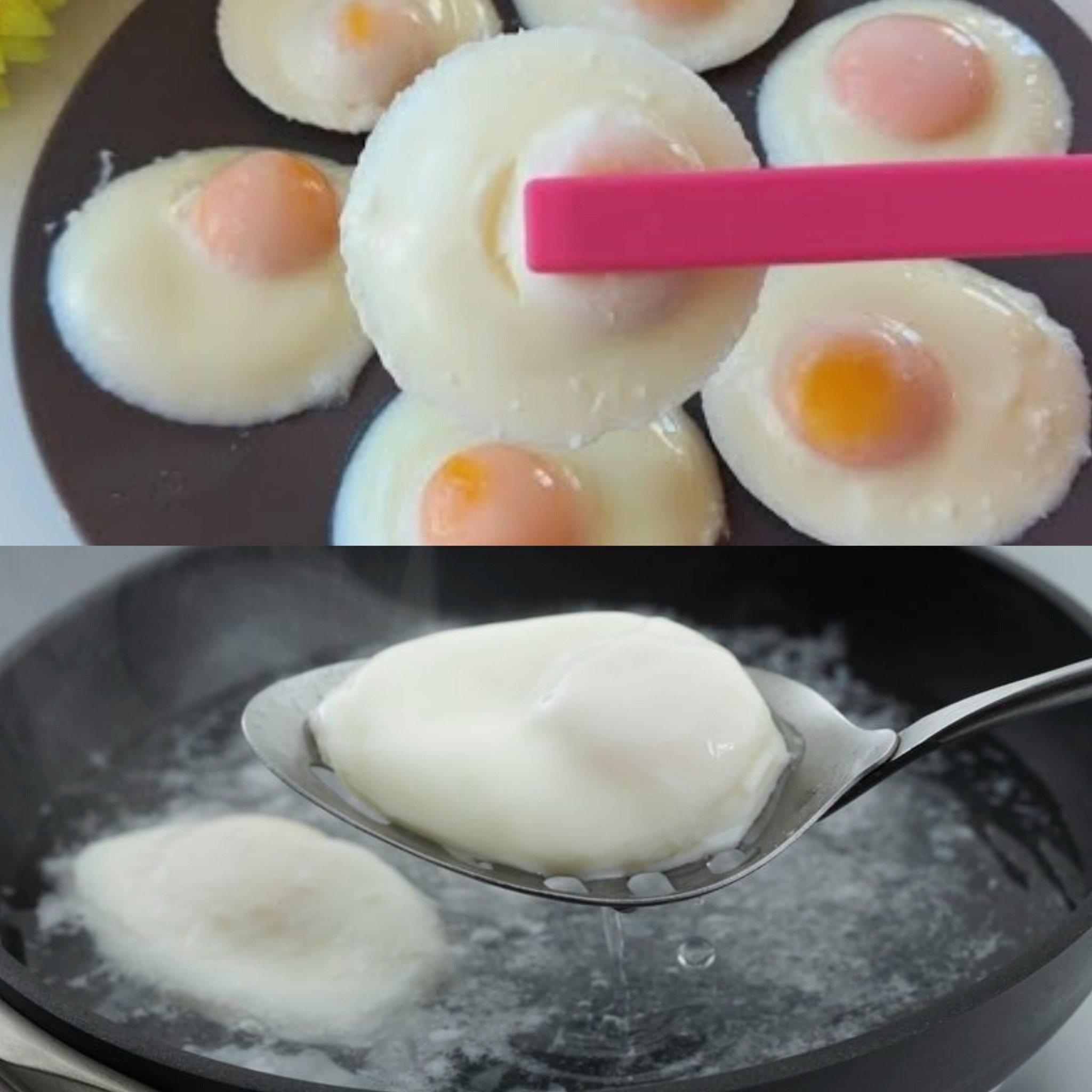Ever Since I Learned This Method, I’ve Always Been Making Eggs This Way: Poached Perfection
If you share my passion for eggs, you will value discovering a fresh, tried-and-true technique for consistently making flawlessly poached eggs. A tasty and nutritious option for eating eggs for breakfast, lunch, or dinner are poached eggs. Once you figure out the method, they’re easy to make and provide a sense of sophistication to any dinner. This is how to become an expert egg poacher.
Ingredients You’ll Need:
- Fresh Eggs: The fresher the better, as fresh eggs hold their shape better when poached.
- Vinegar: 1-2 teaspoons, helps the egg whites coagulate more quickly (optional).
- Water: Enough to fill a medium-sized saucepan.
- Salt and Pepper: To taste, for seasoning.
Step-by-Step Recipe Guide:
Prepare the Water:
A medium-sized saucepan should have about three inches of water in it. Over medium heat, bring the water to a slow simmer. Not a rolling boil, but little bubbles should appear on the pan’s bottom.
Include Vinegar:
Simmer the water with one or two tablespoons of vinegar added. This is not necessary, but it can help the egg whites set more quickly, making the poached egg seem nicer.
Crack the Egg:
Crack an egg into a little cup or dish. This helps to guarantee that the yolk stays intact and makes it simpler to drop the egg softly into the water.
Create a Whirlpool:
Make a gentle vortex in the saucepan’s water by stirring it with a spoon. This facilitates the egg white’s encirclement of the yolk, resulting in a poached egg that is more uniformly cooked and compact.
Poach the Egg:
Gently transfer the egg from the bowl to the middle of the vortex. The egg should cook for 3–4 minutes, or until the yolk is as runny as you desire. Cook for one additional minute for a firmer yolk.
Take out and serve:
The poached egg should be carefully removed from the water using a slotted spoon. To get rid of extra water, let it drain on a paper towel for a few seconds. To taste, add salt and pepper for seasoning.
Savour the Ideal Poached Egg:
Serve your poached egg with your favourite breakfast dishes, over a salad, or over a slice of bread. Poached eggs also make a fantastic, high-protein garnish for cereal bowls or a wonderful complement to recipes such as Eggs Benedict.
Why This Approach Is Effective:
- Fresh Eggs: When poaching, using fresh eggs guarantees that the whites will stick together better and be firmer.
- Vinegar and Whirlpool: Adding vinegar and generating a whirlpool facilitates the rapid coagulation of the egg white around the yolk, giving rise to a poached egg that is tidy and compact.
- Mild Simmer: Eggs cook more evenly and don’t break when the water is kept at a gently simmer as opposed to a raging boil.
Tips for Best Results:
- Use Fresh Eggs: Eggs will poach more effectively the fresher they are.
Temperature Control: To keep the eggs from becoming tough or crumbling, keep them simmering gently. - Practice: If your initial tries aren’t flawless, don’t give up. Although it takes some getting used to, poaching eggs is simple and satisfying once you get the hang of it.
In summary
Getting proficient at poaching eggs will elevate your dishes from average to exceptional. You can always have precisely poached eggs with this approach, which will give your dishes a delectable and sophisticated touch. Try this method and you’ll see why it’s now my preferred method for preparing eggs. Have fun in the kitchen!

That’s how I prepare my poached eggs! Love it!